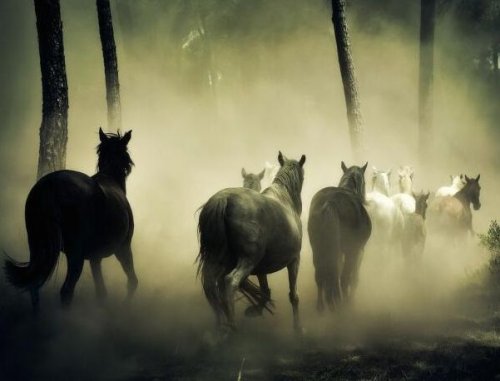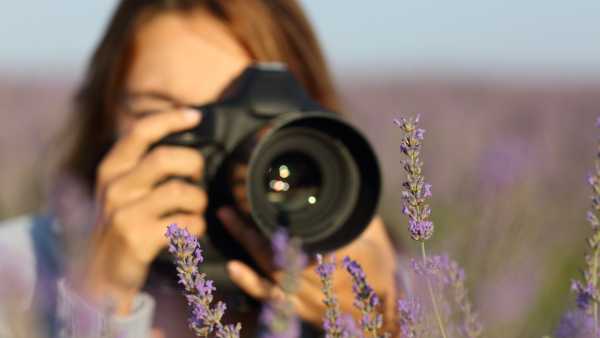
I remember when I was little, my grandmother told me about how she once had to observe a solar eclipse. Impressed by the fact that the Sun suddenly became completely dark, I was no less surprised by the fact that, it turns out, animals began to behave very peculiarly about an hour before the solar eclipse.
— The chickens started clucking, — said the grandmother, — the goat ran around the yard in anxiety, the dog began to rush about and, to the surprise of the household, tried to hide under a haystack that was in the garden. But the strangest behavior was that of the cat, who had recently given birth to kittens. The mother took all the babies by the scruff of the neck with her teeth and either carried them to a corner or hid them under the furniture. Having dragged the last fluffy baby, the mother cat lay down nearby and watched with her eyes the places where her babies were now. However, the kittens, strangely enough, lay quietly and did not try to frolic, as usual.
– Look! – the grandmother raised her finger meaningfully at the end of her story. – Even animals understand that something unusual is about to happen in nature!
But really, animals very often try to give us some kind of signals that some natural disasters are coming soon. I wonder what kind of sensors they have inside? Having become seriously interested in this question, I decided to leaf through the literature. And what happened?..
It turns out that for thousands of years, people around the world have reported animals behaving anxiously in the lead-up to natural disasters. So could these signals be used as warnings of impending disasters? But that question led to two more:
In 2004, a tsunami triggered by a magnitude 9.1 undersea earthquake off the coast of Indonesia devastated coastal areas of the Indian Ocean, killing an estimated 225,000 people. The huge death toll was partly due to the fact that nearby communities received no warning of the impending danger.
Local warning systems, such as tide gauges and earthquake sensors, failed to send any clear warnings—they were out of order due to maintenance issues, and many coastal areas lacked tsunami warning systems. Wireless communications also failed to alert people. Many text messages simply did not reach cell phone owners, while others arrived illegible.
However, hours before the oncoming walls of water up to 9 metres (about 30 feet) high crashed onto shorelines, some animals seemed to sense the approaching danger.
According to eyewitnesses, elephants tried to move to higher ground, flamingos abandoned low-lying nests, and dogs refused to go outside.
In the coastal village of Bang Koi in Thailand, locals reported that a herd of buffalo that was on the beach at the time suddenly pricked up their ears. The animals began to peer out to sea, as if they had spotted something on the horizon. Then, as if on cue, they all rushed to the top of a nearby hill. And this happened just minutes before the tsunami hit.
— Survivors also reported seeing animals and birds that were purposefully heading from the shore to the city center a few minutes before the tsunami arrived, says Irina Rafliana, who was previously part of the advisory group of the UN International Strategy for Disaster Risk Management and is now a researcher at the German Development Institute in Bonn. — Many of those who survived ran along with these animals.
Rafliana has similar stories to tell from her fieldwork during other disasters, such as the 2010 tsunami caused by an undersea earthquake off Sumatra that killed nearly 500 people in the Mentawai Islands. But even then, some animals, like elephants, reacted as if they already knew a natural disaster was coming. Huddled together, they headed toward the hills. This despite the fact that elephants have a hard time climbing up hills due to their large mass. But if you want to live, you can overcome anything.
As surprising as it may sound, many areas regularly affected by natural disasters do not have early warning systems. In 2017, the World Meteorological Organization found that governments in about 100 countries around the world still do not have early warning systems for the natural disasters they are exposed to. KELLEPICS,
Stories of animal behavior before natural disasters have prompted some researchers to give serious scientific attention to the theory that animals may have previously unexplored “built-in systems” that warn them of approaching disasters. This raises an intriguing question: Could animals serve as natural early warning systems for humans?
The earliest recorded mention of unusual animal behavior before a natural disaster dates back to 373 BC, when the Greek historian Thucydides reported rats, dogs, snakes, and weasels fleeing the city of Helis a few days before an earthquake.
There are other reports in history. Minutes before the Naples earthquake of 1805, oxen, sheep, dogs and geese allegedly began to simultaneously give alarm calls. And before the San Francisco earthquake of 1906, horses suddenly broke loose and ran, showing panic fear.
These days, even with advanced technology, it can be very difficult to detect many types of impending natural disasters. For example, in the case of earthquakes, seismic sensors only begin to detect tremors when the ground is already shaking quite a bit. Reliable prediction requires precursor signals, and scientists have not yet found one that consistently appears before major earthquakes. Hence the growing willingness of some scientists to consider more unconventional warning signs, such as animal behavior.
“With all the technology available today, we are not able to accurately predict earthquakes or most natural disasters,” says Charlotte Frances, head of the ornithological group at the French Bureau of Species Diversity and a participant in the Kiwi Kyuka project, which studies how migratory birds crossing the Pacific Ocean avoid storms.
One of the most important studies of how animals can predict disasters was conducted five years ago by a team led by Martin Wikelski of the Max Planck Institute for Animal Behavior in Germany. The study involved recording the movement patterns of various animals (cows, sheep, and dogs) – a process known as dowsing – on a farm in the earthquake-prone March region of central Italy. Each animal was fitted with a collar with a chip that sent movement data to a central computer every few minutes between October 2016 and April 2017.
“A long time…” someone might say. Yes, it really is a long time! But it is better, in my opinion, to conduct such long-term tests than to later count the losses and state the number of victims that might not have happened.
Apparently, the Max Planck Institute thinks so too, because they didn’t limit themselves to just one study. In another experiment conducted by Wikelski, they observed the movements of goats with special collars. The animals were on the slopes of Mount Etna in Sicily. And it was found that they seemed to have a premonition in advance when Etna would “come to life.”
Scientists are now studying whether these electromagnetic disturbances in the atmosphere before a volcanic eruption could be a warning of approaching earthquakes that animals can sense.
Earthquakes are invariably preceded by a period of intense stresses deep within the rock, which are known to create electron charges called “positive holes.” These highly mobile electron charge carriers can move rapidly from the crust to the Earth’s surface, where they ionize air molecules above their origin. Such ionization has been observed before earthquakes around the world. As these positive holes move, they also generate ultra-low frequency electromagnetic waves, creating an additional signal that can be detected by some animals.
There are still many questions for science. However, it is possible that soon people who see a herd of running horses will be able to recognize that the animals are signaling an approaching danger. And then, instead of grabbing a camera, a person will understand that he, too, needs to leave this place. The most important thing is to really learn to recognize what our smaller brothers are warning us about.





